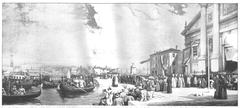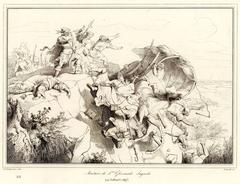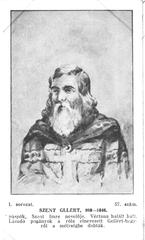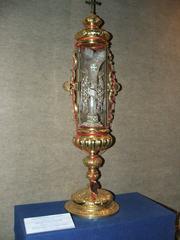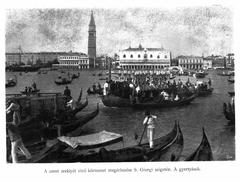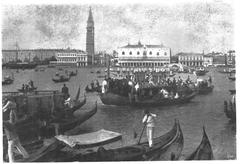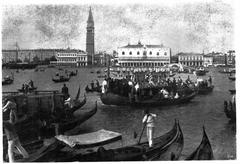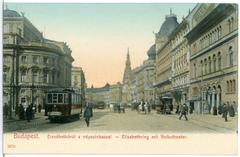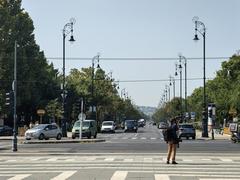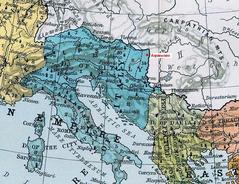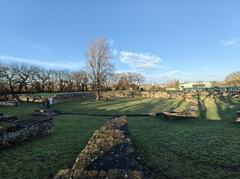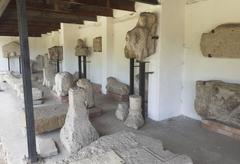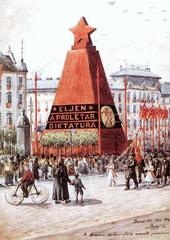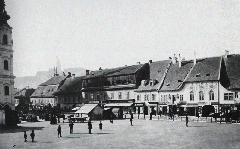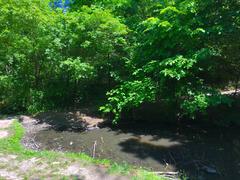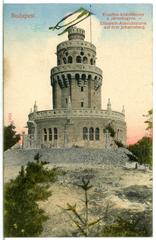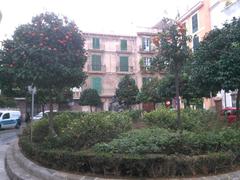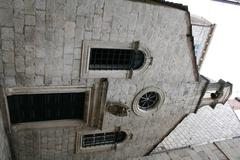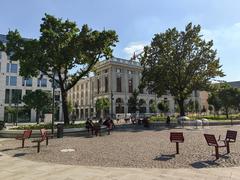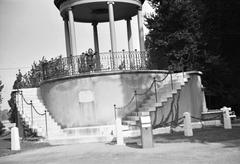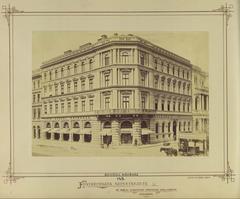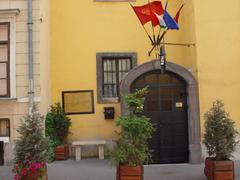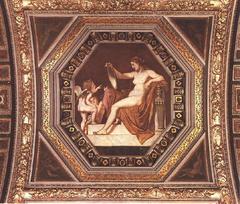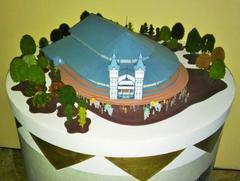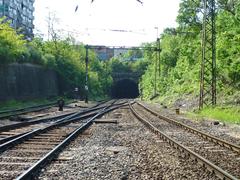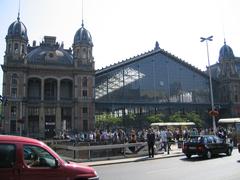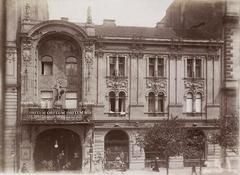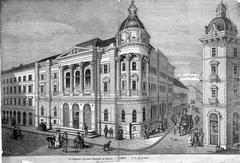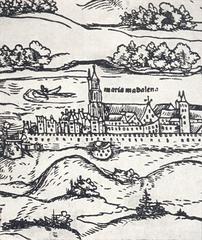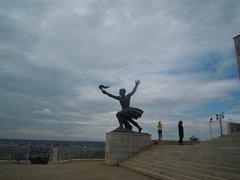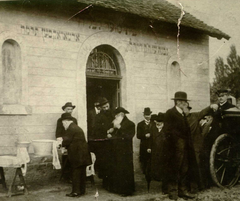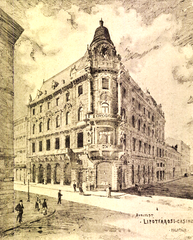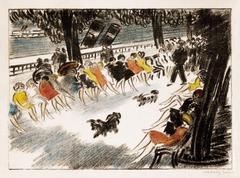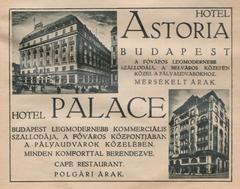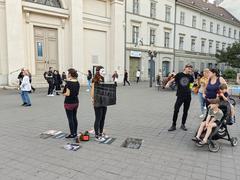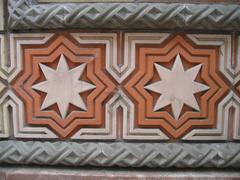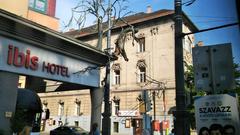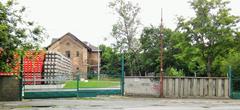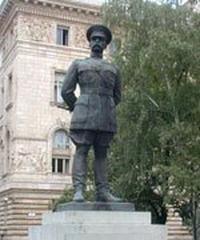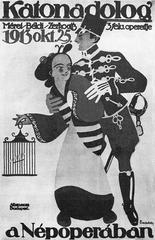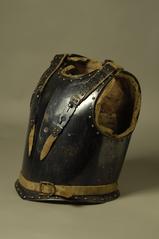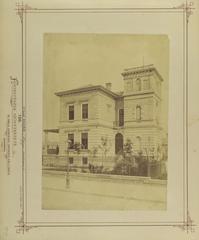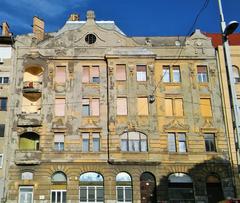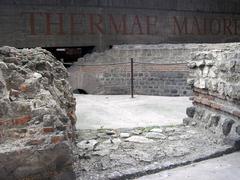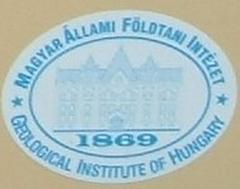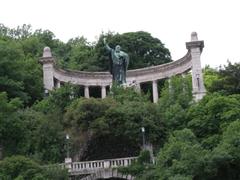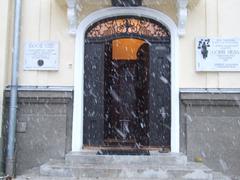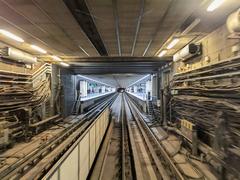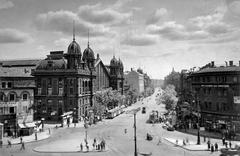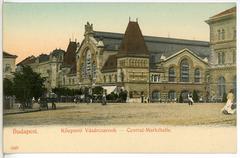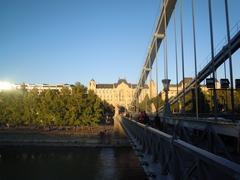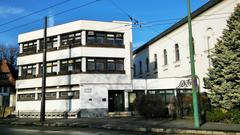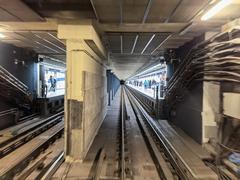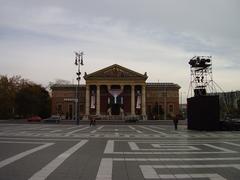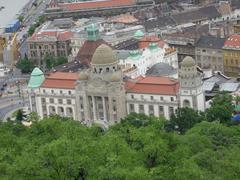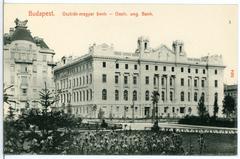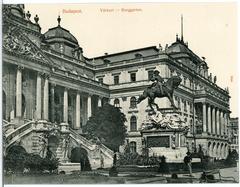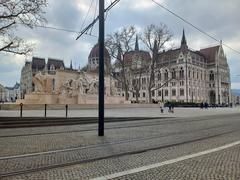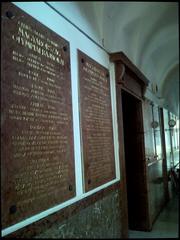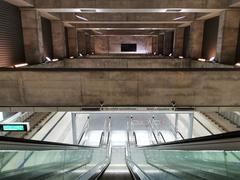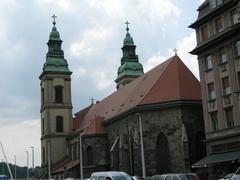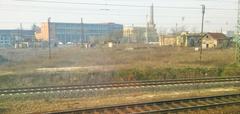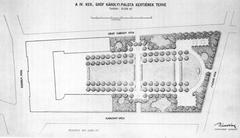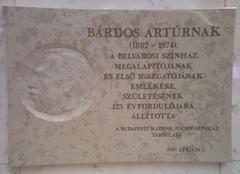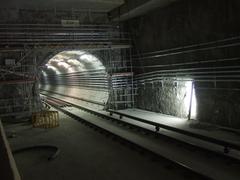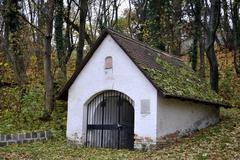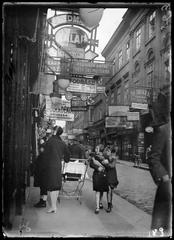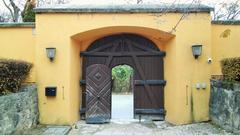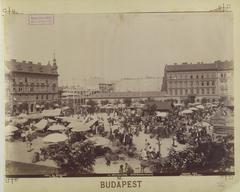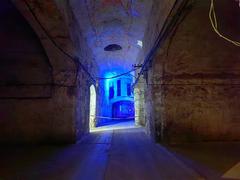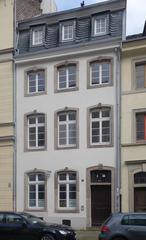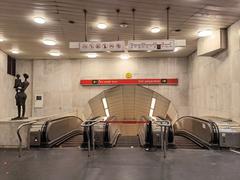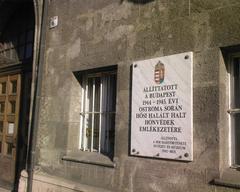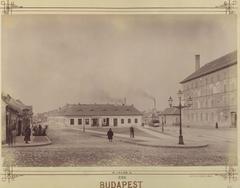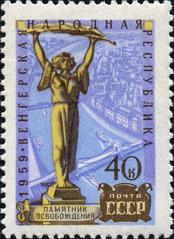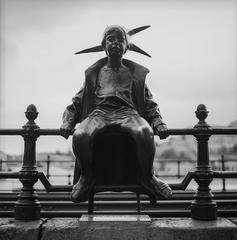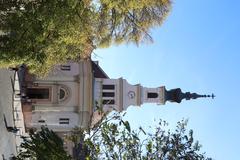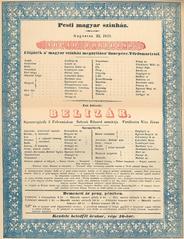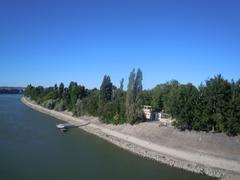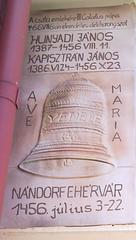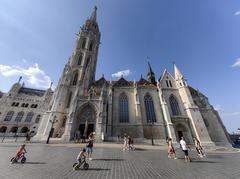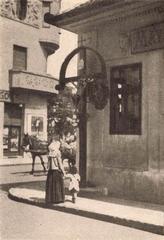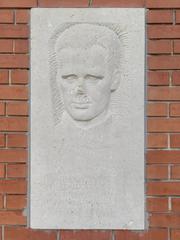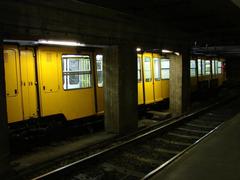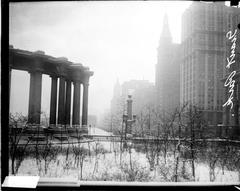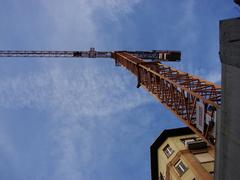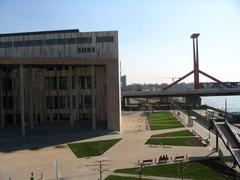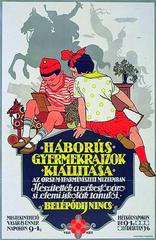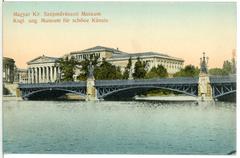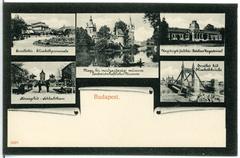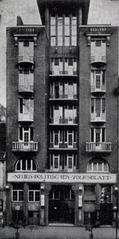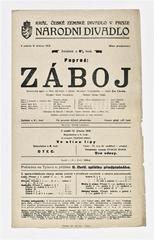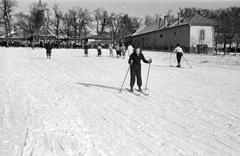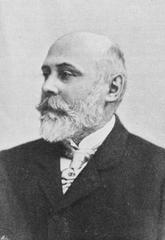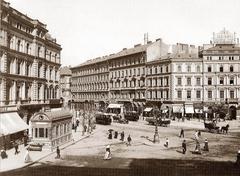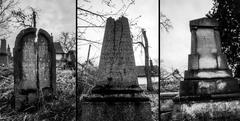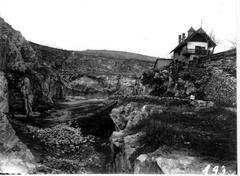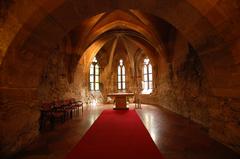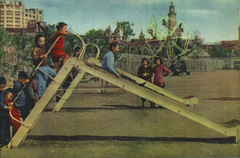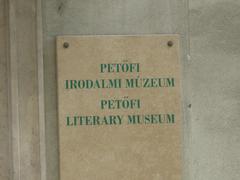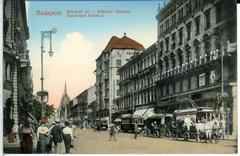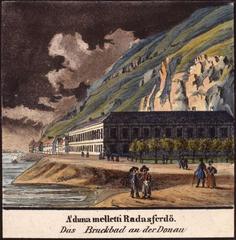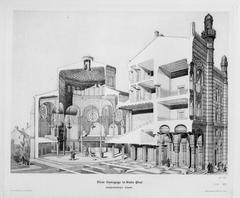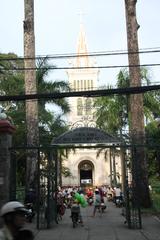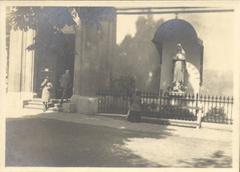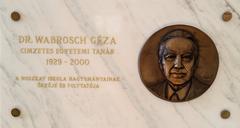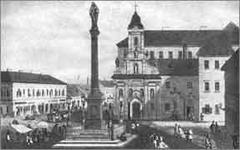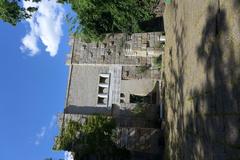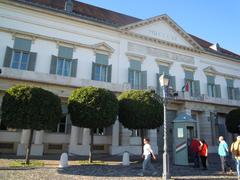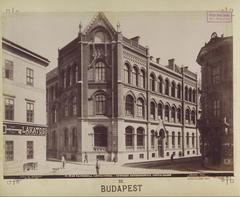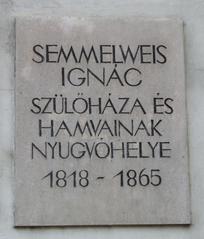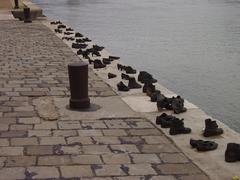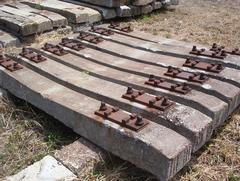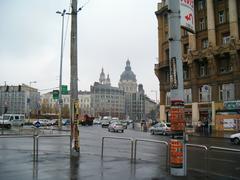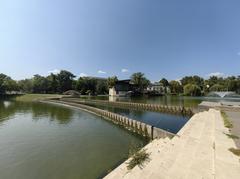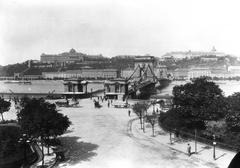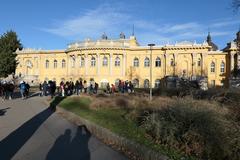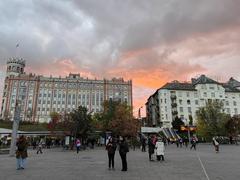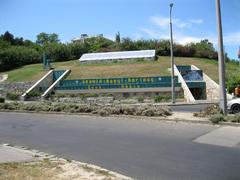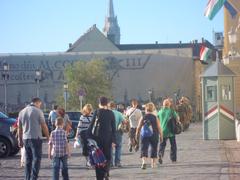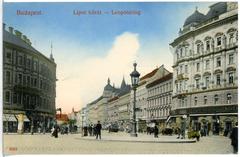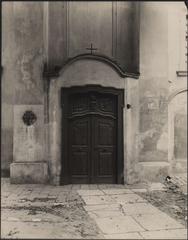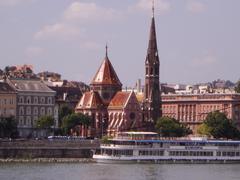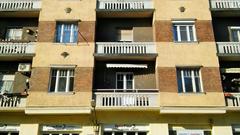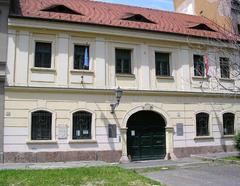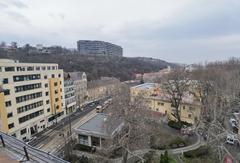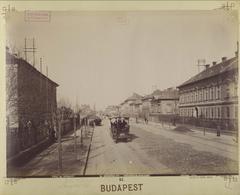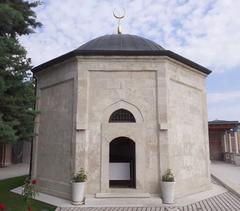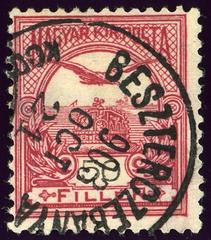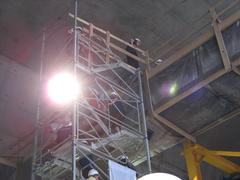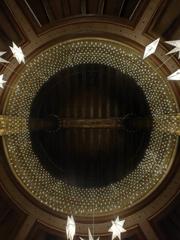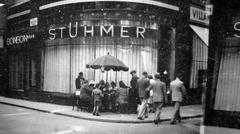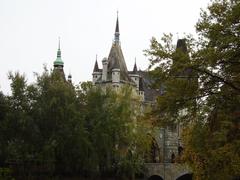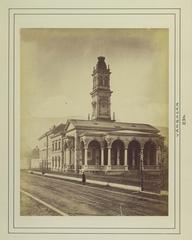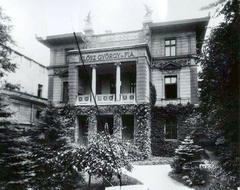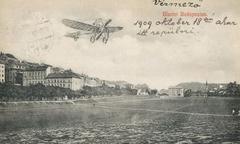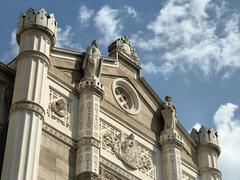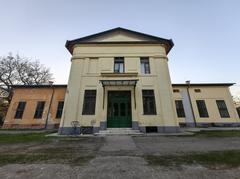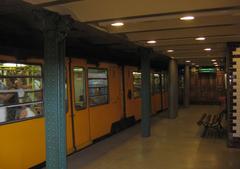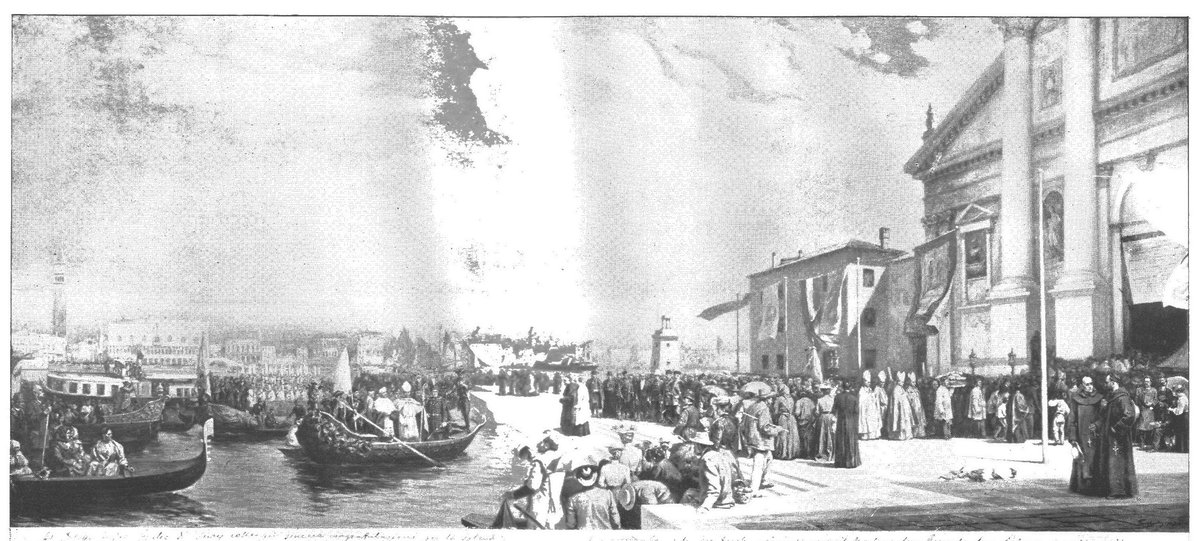
Comprehensive Guide to Visiting Gellért-hegyi vízesès, Budapest, Hungary
Publication Date: 31/07/2024
Introduction
Gellért Hill, or Gellért-hegy, stands as one of Budapest’s most iconic landmarks, merging natural beauty with deep historical and cultural significance. Rising to 235 meters, this hill is not just a geological marvel formed from Late Triassic dolomite rock but also a site infused with rich legends and pivotal historical events (Wikipedia). Named after Saint Gerard, an Italian bishop who was martyred here in the 11th century, Gellért Hill has witnessed transformations from medieval myths to Ottoman vineyards and Habsburg fortresses (Frommers). Today, it houses the Citadella, built in the mid-19th century to quell Hungarian uprisings, and the Liberty Statue, commemorating Soviet liberation during WWII (Travelling Sunglasses). Visitors can also explore the unique Rock Church and the healing waters of the Gellért Thermal Baths, which trace their therapeutic use back to the 12th century (Budapest.city). Recognized as a UNESCO World Heritage Site, Gellért Hill offers panoramic views of Budapest, making it a must-visit for tourists and locals alike.
Table of Contents
- Introduction
- History and Significance of Gellért Hill
- Practical Visitor Information
- Modern-Day Relevance
- Best Time to Visit
- What to Wear
- Essential Items to Bring
- Safety Tips
- Attractions Along the Way
- Nearby Amenities
- Photography Tips
- Accessibility
- Local Etiquette
- Additional Resources
- FAQ
- Conclusion
History and Significance of Gellért Hill (Gellért-hegy)
Origins and Geology
Gellért Hill, part of the Buda Hills, is composed primarily of dolomite rock from the Late Triassic era. The hill’s formation is attributed to tectonic activities during the Pleistocene epoch, which also led to the emergence of numerous thermal springs in the area (Wikipedia).
Historical Background
Early History and Saint Gerard
Named after Saint Gerard (Gellért in Hungarian), an Italian bishop who played a crucial role in converting the Magyars to Christianity under Hungary’s first Christian king, Stephen I. According to legend, Gerard met a tragic end when he was thrown from the hill by pagan rebels in a nail-studded barrel, leading to his martyrdom (Frommers).
Medieval and Ottoman Periods
During the medieval period, the hill was largely uninhabited and shrouded in dense forests, giving rise to legends of witches and other supernatural activities. By the 18th century, the hillsides were transformed into vineyards, contributing significantly to Buda’s winemaking industry. The 1789 land register indicates that vineyards covered 128 hectares of the hill (Wikipedia).
Modern Developments
The Citadella
At the summit of Gellért Hill stands the Citadella, a fortress constructed by the Habsburgs in 1851 following the suppression of the Hungarian Revolution of 1848. The Citadella was intended to serve as a strategic military outpost to control the city and prevent further uprisings. Today, it offers panoramic views of Budapest and houses the Liberty Statue, a 14-meter-tall monument erected in 1947 to commemorate the Soviet liberation of Hungary from Nazi occupation (Travelling Sunglasses).
The Statue of Liberty
The Statue of Liberty, also known as the Liberation Monument, is one of the most iconic landmarks on Gellért Hill. The statue depicts a woman holding a palm leaf, symbolizing peace and victory. Flanked by statues representing progress and destruction, the monument is visible from various points along the Danube River (Frommers).
Cultural and Spiritual Significance
St. Ivan’s Cave and the Rock Church
Beneath the hill’s surface lies a network of caves formed by thermal springs over millennia. Among these, St. Ivan’s Cave stands out for its historical and spiritual significance. In the 20th century, the cave was converted into the Rock Church of St. Gellert, offering a unique blend of natural beauty and spiritual ambiance (Budapest.city).
Szent Gellért Monument
The Szent Gellért Monument, located on the northeastern slope of the hill, commemorates the life and martyrdom of Saint Gerard. The statue, which overlooks the Danube, serves as a poignant reminder of the bishop’s contributions to Hungary’s Christian heritage (Budapest.city).
UNESCO World Heritage Site
In 1987, Gellért Hill, along with the Buda Castle and the banks of the Danube, was designated a UNESCO World Heritage Site. This recognition underscores the hill’s historical, cultural, and architectural significance. The panoramic views from the hill, encompassing landmarks such as the Parliament Building, Buda Castle, and the intricate network of bridges, contribute to its esteemed status (Wikipedia).
Thermal Baths and Healing Waters
Gellért Thermal Baths
At the foot of Gellért Hill lies the renowned Gellért Thermal Baths, a complex built in Art Nouveau style between 1912 and 1918. The baths are fed by mineral-rich thermal springs, known for their therapeutic properties since the 17th century. The complex includes an artificial wave pool and a bubble bath, added in the early 20th century (Budapest.org).
Historical Significance of Thermal Waters
The healing properties of the thermal waters have been recognized since the time of the Knights of St. John in the 12th century. The Ottomans further popularized thermal bathing during their occupation in the 15th century, establishing a tradition that continues to this day (Nothing Familiar).
Practical Visitor Information
Visiting Hours and Tickets
Gellért Hill is accessible year-round, with the Citadella and other attractions typically open from early morning until late evening. While access to the hill itself is free, some attractions like the Gellért Thermal Baths and the Citadella may require tickets. It’s advisable to check the official websites for the most up-to-date information on visiting hours and ticket prices.
Travel Tips
Visitors can reach Gellért Hill by public transportation, including buses and trams. The hill is also accessible by car, although parking can be limited. Comfortable footwear is recommended for those planning to hike the trails.
Nearby Attractions
In addition to Gellért Hill, visitors can explore nearby attractions such as the Buda Castle, the Chain Bridge, and the Hungarian National Gallery. These sites offer a deeper dive into Budapest’s rich history and culture.
Modern-Day Relevance
Tourist Attraction
Today, Gellért Hill is a major tourist attraction, offering a blend of natural beauty, historical landmarks, and cultural experiences. Visitors can explore the Citadella, enjoy the panoramic views, and relax in the thermal baths. The hill also features several hiking trails, making it a popular destination for outdoor enthusiasts (Travelling Sunglasses).
Cultural Events and Activities
The hill is also a venue for various cultural events and activities, including concerts, festivals, and guided tours. These events provide visitors with an opportunity to engage with Budapest’s rich cultural heritage while enjoying the scenic beauty of Gellért Hill (Budapest.city).
Best Time to Visit
Seasonal Considerations
The best time to visit Gellért Hill is during the late spring to early autumn months (May to September). During this period, the weather is generally pleasant, and the waterfall is most likely to be operational (We Love Budapest).
Time of Day
Early mornings or late afternoons are ideal for avoiding the crowds and enjoying the serene atmosphere. The waterfall is less crowded during these times, making it perfect for photography and quiet contemplation.
What to Wear
Comfortable Footwear
The climb up Gellért Hill can be steep and uneven in places. Comfortable, sturdy shoes are essential for navigating the paths and stairs.
Weather-Appropriate Clothing
Dress in layers to accommodate the changing weather conditions. A light jacket or sweater is advisable, especially in the early morning or late evening when temperatures can drop.
Essential Items to Bring
- Water and Snacks: There are limited facilities on the hill itself, so bringing your own water and snacks is advisable. Hydration is particularly important during the warmer months.
- Camera: The panoramic views from Gellért Hill are breathtaking, offering excellent photo opportunities of Budapest and the Danube River.
- Map or Guidebook: While the paths are generally well-marked, having a map or guidebook can enhance your visit by providing additional historical and cultural context (Big Boy Travel).
Safety Tips
- Stay on Marked Paths: The terrain can be rugged, and it’s easy to lose your footing if you stray from the designated paths. Stick to the marked trails to ensure your safety.
- Watch for Weather Changes: Sudden weather changes can occur, especially in the spring and autumn. Be prepared for rain and have a plan to seek shelter if necessary.
- Avoid Night Visits: While the hill is generally safe, it’s best to avoid visiting after dark due to limited lighting and the potential for uneven paths.
Attractions Along the Way
Szent Gellért Monument
This statue commemorates St. Gellért, who, according to legend, was thrown from the hill by pagans. The monument is a significant historical and cultural landmark (Travel Yes Please).
Citadella
A fortress built by the Habsburgs in 1854, the Citadella offers stunning views of Budapest and the Danube. It also houses several smaller monuments and statues, including those of Plato, Jesus, and Gandhi (Big Boy Travel).
Liberty Monument
Erected in 1947, this monument commemorates the Soviet liberation of Hungary from Nazi forces during World War II. It stands as a prominent feature on the hill and offers another vantage point for panoramic views (Travel Yes Please).
Nearby Amenities
Rudas Thermal Baths
Located at the base of Gellért Hill, the Rudas Baths offer a traditional Turkish bath experience. Built in the 1500s, the baths feature a series of pools with varying temperatures, fed by mineral-rich springs (Big Boy Travel).
Gellért Hotel and Baths
Another excellent option for relaxation, the Gellért Hotel and Baths are renowned for their Art Nouveau architecture and therapeutic waters. The baths are fed by the same hot springs that have been used since prehistoric times (Travel Yes Please).
Photography Tips
Golden Hour
The best lighting for photography is during the golden hour, shortly after sunrise or before sunset. This time of day provides soft, warm light that enhances the natural beauty of the landscape.
Panoramic Shots
Utilize the panoramic mode on your camera or smartphone to capture the expansive views of Budapest and the Danube River.
Foreground Interest
Incorporate elements such as the Szent Gellért Monument or the Citadella into your shots to add depth and context to your photos.
Accessibility
Staircase and Paths
The primary route up the hill involves a series of stairs and winding paths, which may not be suitable for those with mobility issues.
Public Transport
For those unable to make the climb, Bus 27 provides a convenient alternative, taking you close to the top of the hill (Big Boy Travel).
Local Etiquette
- Respect Monuments: The statues and monuments on Gellért Hill hold significant historical and cultural value. Treat them with respect and avoid climbing or sitting on them.
- Quiet Enjoyment: Many visitors come to Gellért Hill for its tranquility and natural beauty. Keep noise levels to a minimum to preserve the peaceful atmosphere.
Additional Resources
- Digital Tickets: For quick and convenient access to Budapest’s attractions, consider purchasing digital tickets in advance. This can save time and streamline your visit (Travel Yes Please).
- Guided Tours: For a more in-depth experience, consider joining a guided tour. These tours often provide valuable insights into the history and significance of the hill and its attractions (Big Boy Travel).
FAQ
Q: What are the visiting hours for Gellért Hill? A: Gellért Hill is accessible at all times, but specific attractions like the Citadella and Gellért Thermal Baths have their own visiting hours. It’s best to check the official websites for the most accurate information.
Q: Are there any entry fees for attractions on Gellért Hill? A: Some attractions may have entry fees, while others are free. Check the specific attraction’s website for detailed information.
Q: How can I get to Gellért Hill using public transport? A: Several bus lines provide direct access to Gellért Hill. You can also take a taxi or join a guided tour for convenience.
Q: Is Gellért Hill suitable for families with young children? A: Yes, Gellért Hill has family-friendly activities and playgrounds. However, the steep paths and steps may be challenging for toddlers or those with strollers.
Q: Can I take photographs on Gellért Hill? A: Absolutely! Gellért Hill offers stunning views perfect for photography, especially during sunset.
Conclusion
Gellért Hill offers an unparalleled experience that blends natural splendor, historical depth, and cultural richness. From the geological marvels and historical narratives involving Saint Gerard to the modern-day attractions like the Citadella and the Liberty Statue, the hill encapsulates Budapest’s multifaceted heritage (Travelling Sunglasses). Whether you are wandering through the serene Rock Church, soaking in the Gellért Thermal Baths, or capturing panoramic views of the city, Gellért Hill promises a fulfilling visit (Budapest.city). Practical tips, such as visiting during the golden hours and wearing comfortable footwear, ensure a pleasant journey through this storied landscape. By respecting the site’s historical and cultural monuments, visitors contribute to preserving its legacy for future generations. For those planning their trip or seeking more detailed information, downloading our mobile app Audiala is highly recommended.
References
- Wikipedia. Gellért Hill. Retrieved from https://en.wikipedia.org/wiki/Gellért_Hill.
- Frommers. Gellért-hegy. Retrieved from https://www.frommers.com/destinations/budapest/attractions/gellrt-hegy.
- Travelling Sunglasses. Budapest Gellert Hill Citadella Ultimate Guide. Retrieved from https://travellingsunglasses.com/budapest-gellert-hill-citadella-ultimate-guide/.
- Budapest.city. Gellért Hill Attractions. Retrieved from https://www.budapest.city/attractions/gellert-hill/.
- Budapestbylocals. Gellért Hill. Retrieved from https://www.budapestbylocals.com/budapest-gellert-hill/.
- Hungary Budapest Guide. Gellért Hill. Retrieved from https://www.hungarybudapestguide.com/budapest/gellert-hill/.
- Travel Yes Please. Gellért Hill Citadella Budapest. Retrieved from [https://www.travelyesplease.com/travel-blog-gellert-hill-citad
